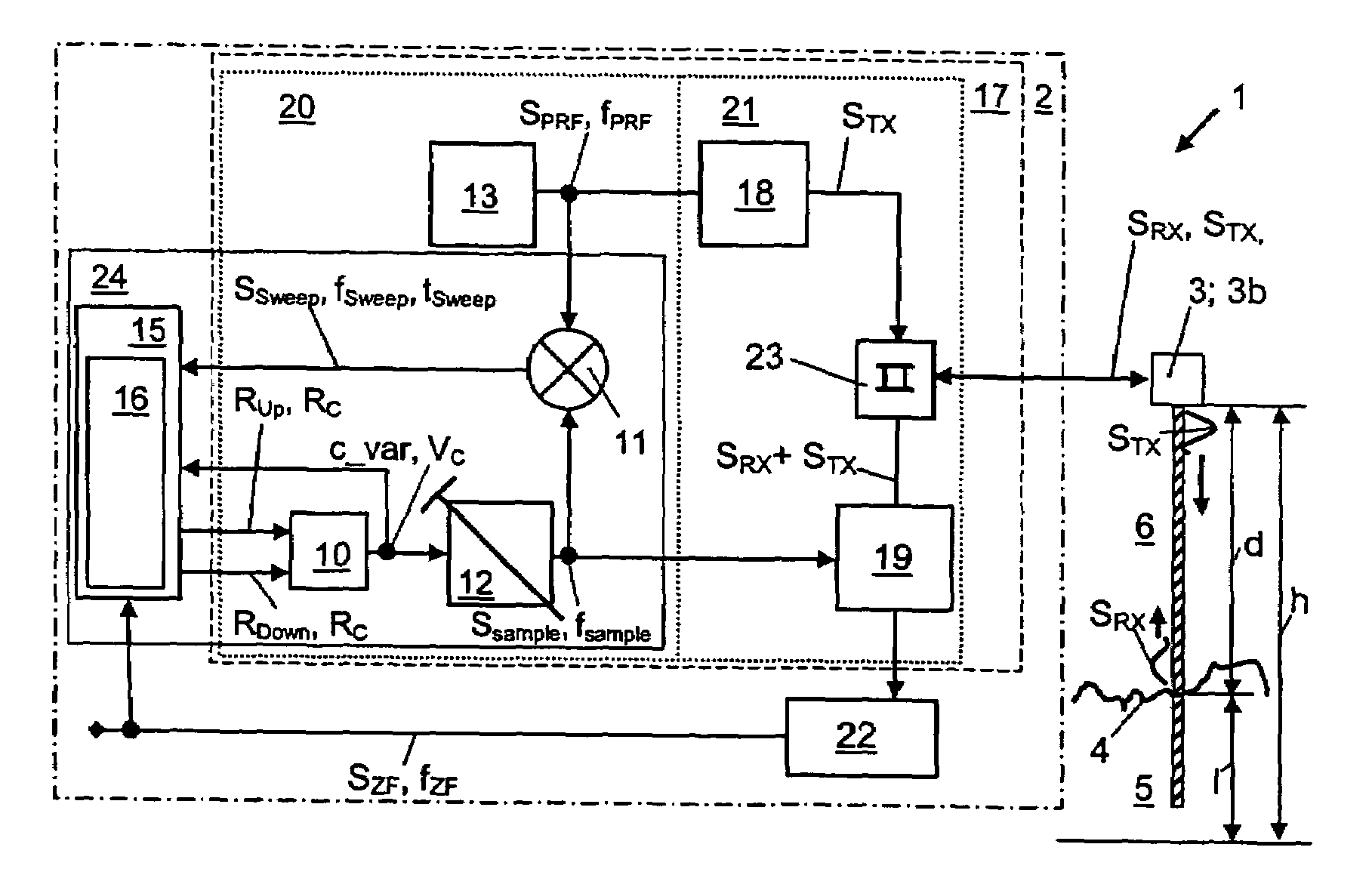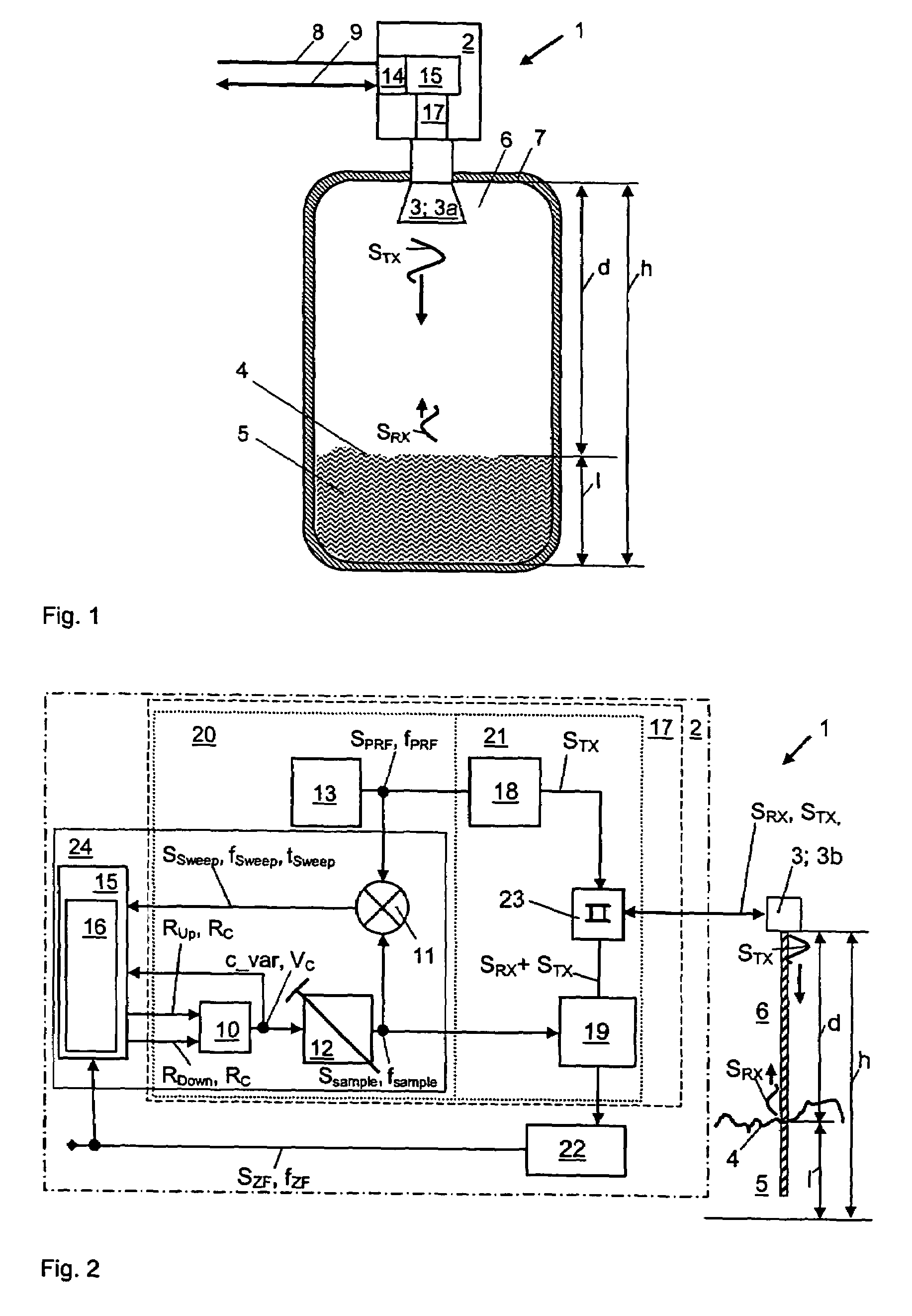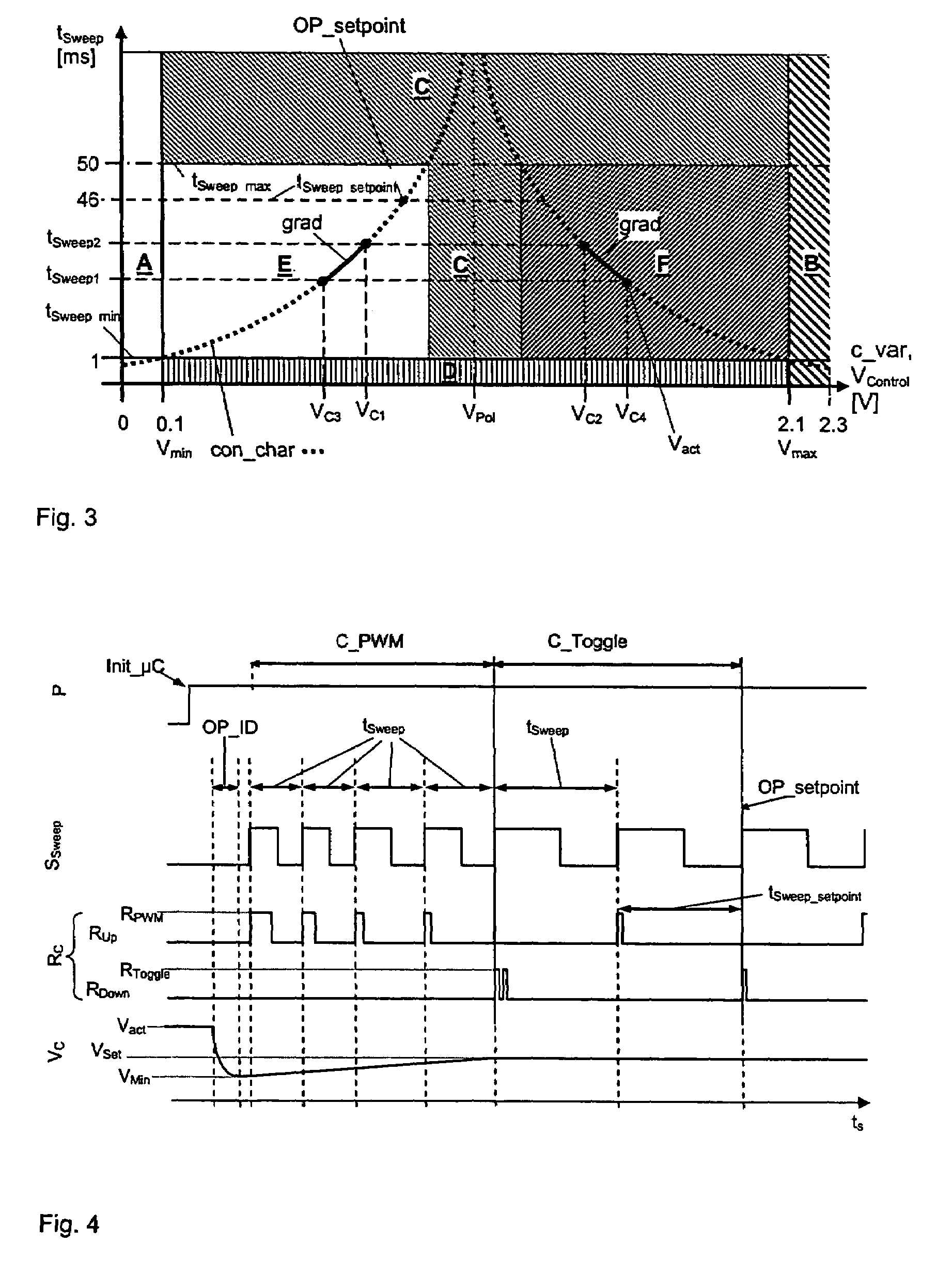Method for determining fill level on the basis of travel time of a high-frequency measuring signal
a high-frequency measuring signal and fill level technology, applied in the direction of liquid/fluent solid measurement, volume measurement apparatus/methods, reradiation, etc., can solve the problems of complex production, high cost of purchase, no suitable, cost-effective data-processing units, etc., to achieve more precise and stable results
- Summary
- Abstract
- Description
- Claims
- Application Information
AI Technical Summary
Benefits of technology
Problems solved by technology
Method used
Image
Examples
Embodiment Construction
[0029]FIG. 1 shows an example of an embodiment of the apparatus 1 of the invention for determining the distance d, or the fill level l, on the basis of the travel time t of high-frequency measuring signals SHF. For this purpose, apparatus 1 includes primarily a measuring unit 3 connected with the measuring transmitter 2, by means of which the high-frequency measuring signal SHF, or the transmission signal STX, is coupled, and emitted, into a process space 6 in the container 7 bounding the fill substance 5. The measuring unit 3 is directed into the process space 6 of the container 7 through an opening, e.g. a nozzle. The measuring unit 3, or the transducer element, as shown in FIG. 1, can be configured as an antenna 3a, and especially as a horn antenna, a rod antenna, a parabolic antenna, or also a planar antenna, which freely radiates the transmission signal STX, into the process space 6 of the container 7. Instead of the antenna 3a freely radiating into the process space 6, a surfa...
PUM
 Login to View More
Login to View More Abstract
Description
Claims
Application Information
 Login to View More
Login to View More - R&D
- Intellectual Property
- Life Sciences
- Materials
- Tech Scout
- Unparalleled Data Quality
- Higher Quality Content
- 60% Fewer Hallucinations
Browse by: Latest US Patents, China's latest patents, Technical Efficacy Thesaurus, Application Domain, Technology Topic, Popular Technical Reports.
© 2025 PatSnap. All rights reserved.Legal|Privacy policy|Modern Slavery Act Transparency Statement|Sitemap|About US| Contact US: help@patsnap.com



